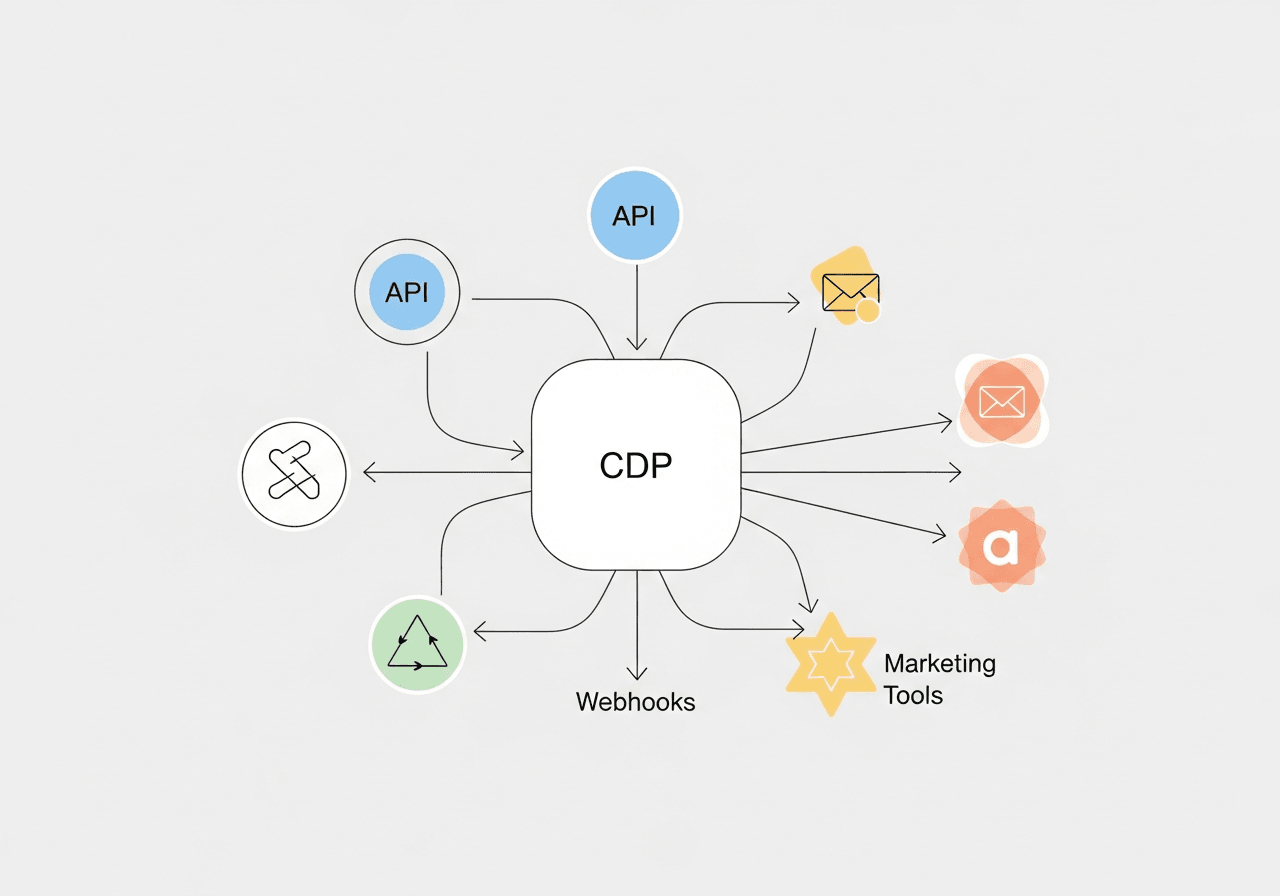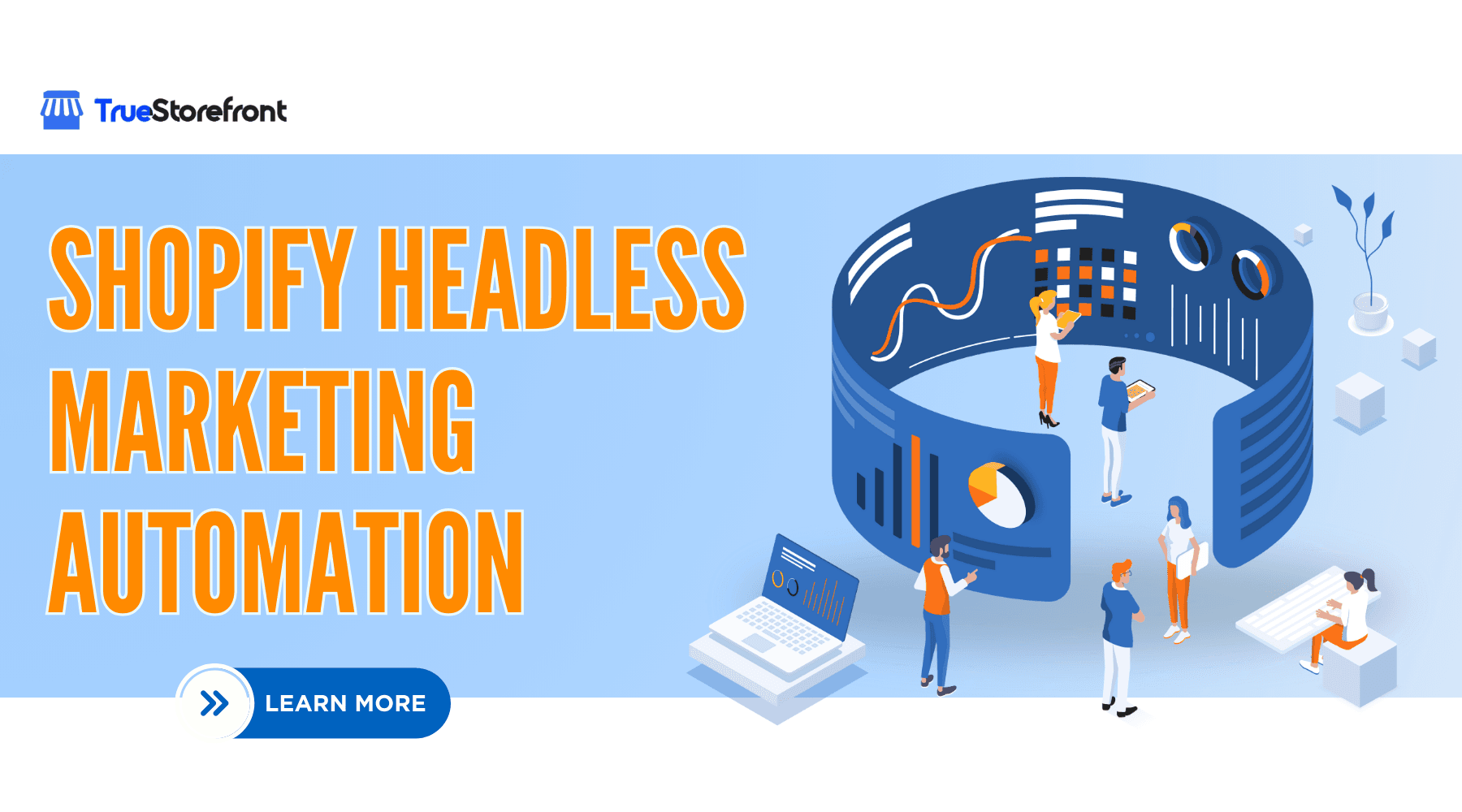Marketing automation plays a critical role in scaling ecommerce operations, especially for brands running on a headless architecture. With Shopify Headless, merchants gain the flexibility to integrate best-in-class email and push notification systems using APIs, webhooks, and dedicated automation platforms. This environment allows marketers to craft personalized, automated campaigns that operate in real time across multiple channels.
This article explores how automation works in a headless setup, which tools can be integrated, and how to connect them effectively to deliver high-impact email and push campaigns.
I. Understanding Marketing Automation in Shopify Headless

Operating headless means your storefront is decoupled from Shopify’s backend. As a result, marketing automation depends heavily on API-driven communication rather than theme-based features.
Key characteristics of automation in a headless architecture:
- Event-driven workflows: Campaigns trigger from backend events such as new orders, abandoned carts, new customers, and product back-in-stock updates.
- API-based integrations: Apps communicate with your custom frontend through REST or GraphQL APIs.
- Platform flexibility: Merchants can integrate external tools such as Klaviyo, Omnisend, OneSignal, Firebase Cloud Messaging, and custom-built automation engines.
- Omnichannel capability: Email, SMS, and push notifications operate seamlessly across mobile, web, and app environments.
By leveraging these strengths, brands gain complete control over customer interactions and can scale marketing workflows without limitations.
II. Why Automate Email and Push Campaigns in a Headless Store
Automation is essential for modern ecommerce, but its value multiplies in a headless environment. The benefits include:
a. Consistency Across All Frontends
A headless store may include a website, mobile app, PWA, or IoT-enabled storefront. Automation ensures consistent messaging across all touchpoints.
b. High Personalization Potential
APIs allow deep data exchange: browsing behavior, cart activity, purchase history, personalized product recommendations, and customer segments.
c. Faster Campaign Deployment
Developers integrate once, and marketers can build unlimited automated flows inside the marketing platform.
d. Improved Delivery and Engagement
Push notifications, especially app or web push, offer instant delivery, high visibility, and strong engagement metrics.
e. Scalability for Growing Brands
Automation automatically manages repetitive tasks, allowing marketing teams to focus on strategy.
These capabilities make Shopify Headless an ideal environment for modern omnichannel marketing automation.
III. Essential Components for Automating Campaigns in Shopify Headless

To enable email and push workflows, several technical components must work together:
1. Shopify Admin API or GraphQL Storefront API
Used to send data about customers, orders, carts, and behavior to your automation tools.
2. Webhooks
Allow real-time communication, for example:
- New order created
- Cart updated
- Checkout initiated
- Customer created
3. Customer Data Platform (Optional)
Tools such as Segment, mParticle, and RudderStack unify data streams across all channels.
4. Marketing Automation Apps
Popular options include:
- Klaviyo
- Omnisend
- Mailchimp
- OneSignal
- Firebase Cloud Messaging
- PushOwl (for push)
5. A Custom Frontend Layer
This could be Next.js, React, Hydrogen, or Nuxt, enabling advanced customization and event tracking.
Integrating these components ensures all marketing triggers and workflows run smoothly.
IV. How to Integrate Email Automation in a Shopify Headless Setup
Step 1: Connect Shopify Backend to Your Automation Platform
Most platforms, such as Klaviyo and Omnisend, offer native Shopify integrations. However, in headless setups, you must ensure the API connection includes:
- Customer data
- Order metrics
- Abandoned cart events
- Custom properties from your frontend
Step 2: Implement Event Tracking in the Frontend
Use JavaScript SDKs or API calls to transmit events such as:
- Viewed product
- Added to cart
- Checkout started
- Viewed collection
For example, in a Next.js headless app, developers can call:
identify(customer)
track(event, metadata)
Step 3: Configure Email Workflows
Common automated sequences include:
- Welcome series for new customers
- Abandoned cart flow
- Product recommendation flow
- Back-in-stock alerts
- Win-back campaigns
- Post-purchase email series
- Loyalty and VIP tier campaigns
Marketers can build these using drag-and-drop automation interfaces.
Step 4: Personalize with Dynamic Data
APIs allow insertion of:
- Browsing history
- Recent purchases
- Personalized product feeds
- Customer tags
- Discount codes
This creates more relevant and effective messaging.
V. How to Integrate Push Notification Automation

Push notifications require additional technical setup compared to email.
Step 1: Choose Your Push Platform
Popular tools for headless stores include:
- OneSignal
- Firebase Cloud Messaging
- PushOwl
- Airship
- CleverTap
Step 2: Add SDK to Your Headless Frontend
Your developer installs a web or app SDK to enable subscription, device tracking, and push delivery.
Step 3: Connect Shopify Data to Your Push Platform
Use webhooks and APIs to send events such as:
- New subscribers
- Price drop alerts
- Abandoned cart
- Wishlist updates
- Order confirmation
Step 4: Build Automated Push Flows
Typical campaigns include:
- Instant abandoned cart push
- Product back-in-stock push
- Flash sale and promotion alerts
- Price drop notifications
- Personalized product recommendations
Push automation enhances immediacy, especially for mobile and PWA shoppers.
VI. Best Practices for Shopify Headless Marketing Automation
Use a Unified Data Flow
Ensure all events from your custom frontend pass consistently to both email and push platforms.
Avoid Redundant or Overlapping Triggers
Headless setups often run multiple systems, so always coordinate triggers to prevent duplicate notifications.
Segment Carefully

Segment customers by:
- Demographics
- Purchase behavior
- Engagement levels
- Device or platform
- Product interests
Test Across All Frontends
Verify that emails and push notifications display correctly on:
- Web frontend
- Mobile app
- PWA
- Regional versions of your storefront
Monitor Deliverability and Performance
Track metrics such as:
- Open rate
- Click-through rate
- Unsubscribe rate
- Push delivery success
- Conversion rate
These insights help refine your workflows over time.
Maintain GDPR and Data Privacy Compliance: Ensure consent is properly collected and stored across all devices.
VII. Example Automation Architecture for a Shopify Headless Store
Below is a typical architecture for automated campaigns:
-
Customer activity starts on a Next.js or Hydrogen frontend
-
Event data flows via SDK to Klaviyo or OneSignal
-
Shopify Admin API sends transactional data to the automation platform
-
Webhooks provide real-time updates
-
Automation platform triggers:
- Email workflow
- Push workflow
- SMS campaign
- Segmentation and personalization
-
Customer receives messaging across multiple channels in real time
This architecture ensures fast, reliable, and highly personalized communication.
Conclusion
Automating email and push campaigns in Shopify Headless allows brands to deliver deeply personalized, real-time, and scalable communication across all customer touchpoints. By integrating the right apps, APIs, and webhooks, merchants gain complete control over their omnichannel marketing strategy; delivering better engagement, higher conversions, and a seamless brand experience.
